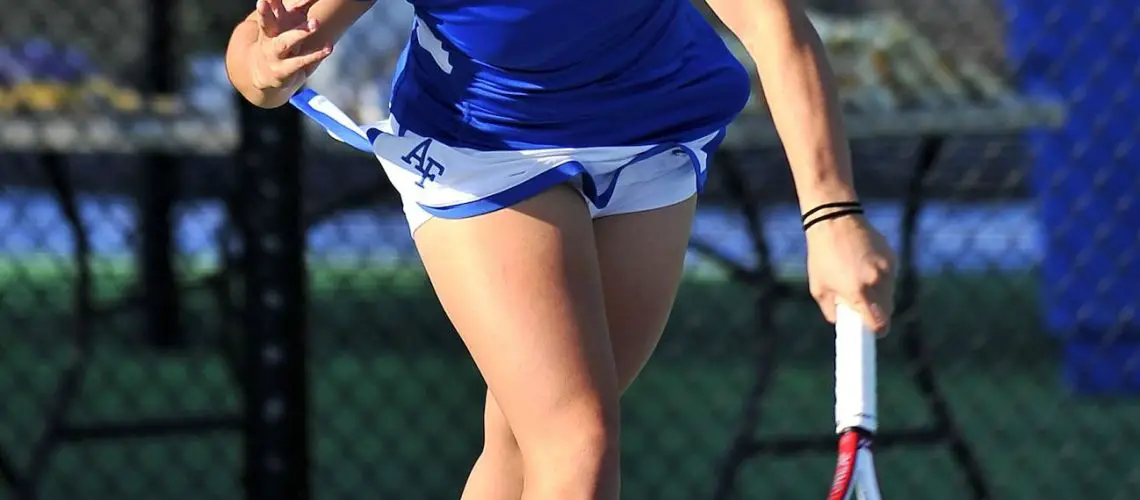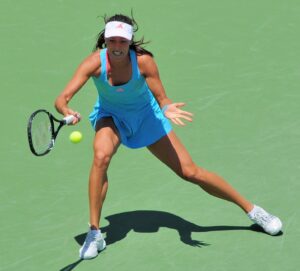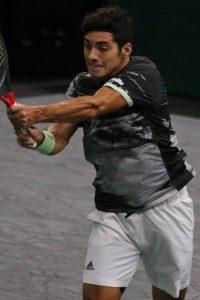We may earn money or products from the companies mentioned in this post.
Introduction

Tennis, a popular sport enjoyed by millions around the world, is played on various court surfaces that greatly impact the game’s dynamics and player performance Understanding the background of these tennis court surfaces and their significance in shaping strategic gameplay is crucial for both players and enthusiasts alike
Background of Tennis Surfaces
Throughout history, tennis court surfaces have evolved to cater to different playing styles and provide unique challenges for players Originally, grass courts were the predominant surface used in the early days of tennis The lush green grass offered a fast-paced game with low bounce, favoring serve-and-volley tactics
As time went on, clay courts gained popularity due to their ability to slow down the ball and create longer rallies Clay provides more grip, allowing players to slide and retrieve difficult shots This surface became synonymous with baseline play and endurance
In recent years, hard courts have become increasingly prevalent in professional tournaments Hard courts offer a medium-paced game with consistent bounce, allowing players to showcase their all-around skills These surfaces are typically made of concrete or asphalt covered with an acrylic layer
Purpose of the Article
This article aims to explore the various types of tennis court surfaces and delve into their characteristics and impact on gameplay Additionally, we will examine which surface is considered the fastest among them all
Types of Tennis Court Surfaces

Grass Courts
Grass courts are a classic and iconic surface in tennis, known for their lush green appearance and the elegance they bring to the game The surface is made up of natural grass, which gives it a unique playing experience compared to other court types
The low bounce and fast ball speed on grass courts make them ideal for players who prefer a quick game Serve-and-volley players particularly excel on this surface, as the low bounce allows them to approach the net quickly and put pressure on their opponents
Grass courts reward aggressive play and quick reflexes due to the fast-paced nature of the game Players need to react swiftly and make split-second decisions as they navigate through each point
Clay Courts
Clay courts offer a contrasting experience compared to grass courts Made from crushed shale, stone, or brick, these surfaces provide a unique challenge that tests players’ endurance and strategic abilities
One distinctive characteristic of clay courts is the higher bounce and slower ball speed This allows for longer rallies as players have more time to reach shots and engage in tactical exchanges with their opponents
Baseline players with good endurance often thrive on clay courts since they can establish solid defensive positions behind the baseline and construct points patiently The slower pace also gives them more opportunities to set up their shots effectively
Hard Courts
Hard courts are one of the most common tennis court surfaces found worldwide They are typically made from acrylic or synthetic materials, providing a stable and consistent playing environment
The ball speed on hard courts can vary depending on factors such as court composition and weather conditions Generally, hard courts offer a medium to fast ball speed, providing a balanced playing experience for players of all styles
Hard courts are versatile and can accommodate different playing styles Whether you’re an aggressive baseliner, a serve-and-volley specialist, or a tactically astute player, hard courts allow you to showcase your skills effectively The consistent bounce also helps players anticipate and execute their shots with precision
Comparison of Court Speeds

When it comes to tennis, the court surface can have a significant impact on the speed and style of play Different court surfaces, such as grass, clay, and hard courts, offer distinct characteristics that challenge players in unique ways
Speed Ratings for Each Type of Court Surface
1 Grass: The fastest court surface
Grass courts are known for their lightning-fast pace The low bounce and slick surface make it ideal for aggressive serve-and-volley players who can take advantage of the quick points Wimbledon is the most famous tournament played on grass courts
2 Clay: The slowest court surface
If you want to witness long rallies and strategic baseline play, look no further than clay courts With high bounces and slow ball speed, clay surfaces require patience and endurance The French Open is renowned for its red clay courts
3 Hard: Medium to fast, depending on specific materials used
The majority of professional tournaments are played on hard courts due to their versatility Hard courts consist of various materials like asphalt or concrete covered with an acrylic layer Depending on the specific construction techniques, hard courts can range from medium-paced to fast-paced surfaces
Factors Affecting Court Speed
1 Court Construction Techniques
-
Methods used in constructing each type of court:
-
How these methods influence overall speed:
The construction techniques employed for grass, clay, and hard courts differ significantly Grass is typically grown over soil with precise maintenance practices to ensure a consistent playing surface Clay courts utilize crushed brick or shale as base material covered by layers of finely powdered brick dust that creates a soft and slow-playing surface Hard courts involve a combination of materials, and the choice of top layer can influence the court’s speed
The construction techniques directly impact the court’s speed Grass courts offer minimal resistance, allowing the ball to skid through quickly Clay courts absorb more energy from the ball, resulting in slower shots Hard courts’ speed depends on factors like surface texture, depth of acrylic layer, and type of underlying material
2 Weather Conditions
-
How temperature, humidity, and precipitation can affect court speed:
-
Adaptations players make during varying weather conditions:
The weather conditions play a crucial role in altering court speeds High temperatures can make hard courts faster by reducing friction between the ball and surface Humidity can slow down grass courts due to increased moisture content, making them less slippery Rainfall or excessive moisture affects clay courts dramatically, making them heavier and even slower
Tennis players need to adapt their game strategies based on weather conditions In hot and dry conditions on hard courts, aggressive shot-making becomes favorable for capitalizing on faster court speeds On grass courts with more moisture or after rain showers, players may need to adjust their footwork to maintain balance and prevent slipping Wet clay surfaces demand patience and precision as players work harder to generate power and control due to decreased ball speed
In conclusion,
About Section B (Factors Affecting Court Speed)
Factors such as court construction techniques and weather conditions play vital roles in determining how fast or slow a tennis court will be The specific methods used in constructing each type of surface greatly influence its overall speed Additionally, weather conditions like temperature, humidity, and precipitation can significantly alter court speeds and require players to adapt their gameplay accordingly
Impact of Court Speed on Tennis Tournaments and Player Success

Major Tennis Tournaments (Grand Slams)
When it comes to the world of tennis, there are four major tournaments that stand above the rest These prestigious events, known as Grand Slams, include the Australian Open, French Open, Wimbledon, and US Open Each tournament is played on a different type of court surface, which greatly impacts the game and ultimately determines the style of play required for success
Australian Open – Hard Court
The Australian Open is played on hard courts, which provide a relatively fast surface compared to other types This means that players who excel in powerful shots and aggressive play tend to have an advantage Previous winners like Roger Federer and Novak Djokovic have showcased their ability to dominate on this particular surface with their impressive serves and lightning-fast movement across the court
French Open – Clay Court
In contrast to the Australian Open’s hard courts, the French Open takes place on clay courts The clay surface slows down the ball significantly compared to other surfaces This requires players to possess exceptional stamina and defensive skills as longer rallies are more common Past champions such as Rafael Nadal have mastered this challenging surface with their relentless endurance and exceptional shot-making abilities
Wimbledon – Grass Court
Wimbledon is famous for its pristine grass courts, which offer a unique playing experience The grass provides a faster pace compared to clay but still slower than hard courts Players who can adapt their game quickly and make precise adjustments thrive at this tournament Legends like Serena Williams and Pete Sampras have demonstrated their mastery of grass by utilizing their powerful serves and volleying skills
US Open – Hard Court
The US Open, similar to the Australian Open, is played on hard courts However, the speed of the surface can vary slightly between the two tournaments The US Open’s hard courts tend to be faster, demanding a game style that favors aggressive and attacking play Players like Serena Williams and Andy Murray have capitalized on this surface to showcase their powerful game styles and ability to dominate their opponents
Player Preference for Specific Court Surfaces
It’s no secret that certain players excel on specific court surfaces due to their playing styles and strengths For example, Rafael Nadal has an outstanding record on clay courts, where his exceptional footwork and topspin-heavy shots give him a significant advantage On the other hand, players like Roger Federer have thrived on grass courts with their elegant and precise shot-making abilities
However, adaptability is also crucial in achieving success across all surfaces Players who can adjust their game according to different court speeds have a better chance of maintaining consistency throughout various tournaments The ability to quickly adapt strategies based on the unique challenges presented by each type of court surface can make a significant difference in player performance
Summary of the Fastest Tennis Surface: Grass Courts

Among the four major tennis tournament surfaces, grass courts are widely regarded as the fastest playing surface With its low bounce and quick movement of the ball, grass provides an exhilarating experience for both players and spectators alike
The fast-paced nature of grass courts significantly impacts gameplay as it favors those with explosive power and quick reflexes Players must constantly stay alert as they need lightning-fast reaction times to handle shots at high speeds
This unique playing environment also dictates specific strategies for success Serving becomes even more vital as players aim to take control early in points with powerful serves that skid off the low-bouncing grass Additionally, the ability to transition smoothly from baseline to net play is essential for capitalizing on shorter points and taking advantage of opportunities
Importance of Understanding Different Court Surfaces in Tennis

Understanding and appreciating the nuances of different court surfaces is crucial for players, coaches, and fans alike Each surface presents its own set of challenges and rewards certain playing styles
By recognizing how court speed affects gameplay and player strategies, individuals can gain a deeper appreciation for the sport’s complexity It also allows players to tailor their training methods and tactics to excel on specific surfaces, ultimately maximizing their chances of success in tournaments
In conclusion, the impact of court speed on tennis tournaments and player success cannot be underestimated The variety of court surfaces adds an exciting dimension to the sport while shaping the skills required for victory Whether it’s dominating with powerful shots on hard courts or demonstrating outstanding endurance on clay, understanding these factors is vital for players aiming to achieve greatness in the world of tennis
Useful Links

Types of tennis courts and their influence on ball bounce & …
What Are Tennis Courts Made Of? (The 11 Surfaces)
How the Court Surface Affects Tennis Betting
Is there any tennis court which is faster than grass?
A Comparison of the Different Tennis Court Surfaces
How Different Is It To Play The Various Tennis Court …
Types of Tennis court surfaces
What Is The Slowest Surface In Tennis? – The Racket Life
What’s the fastest court you’ve ever seen?
How To Adapt From A Slow Court To A Fast Court
Fastest Tennis Surface
Types of Tennis Courts【Dimensions, Types…】
Which Tennis Court Is The Fastest?
Tennis Court Surfaces and Court Speeds
What Surface Is Fastest In Tennis?
Everything you need to know about tennis courts
Professional tips for choosing the best tennis court surface
Why do they play on a grass surface at Wimbledon? – AS USA
Fast tennis! Laykold® tennis court surfaces and their ITF …






